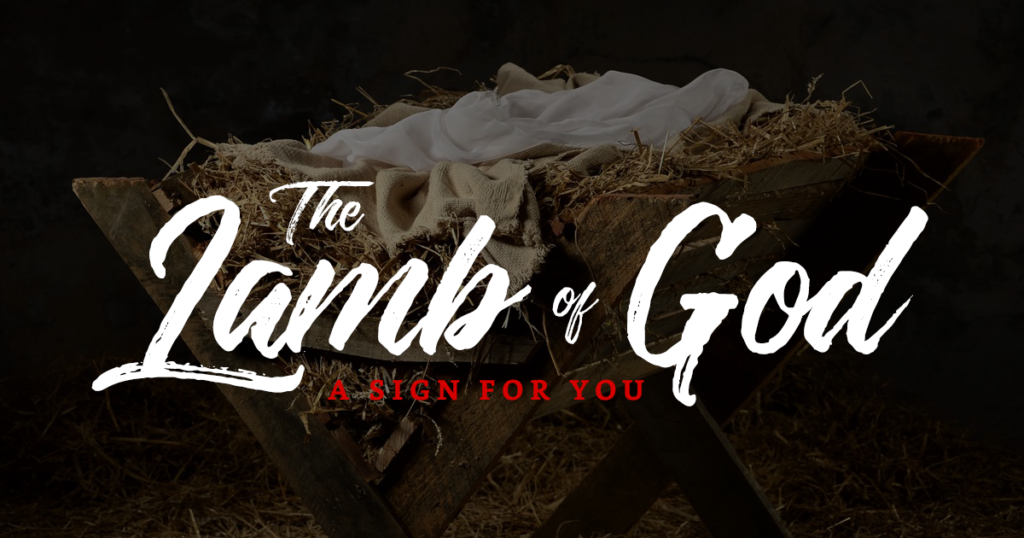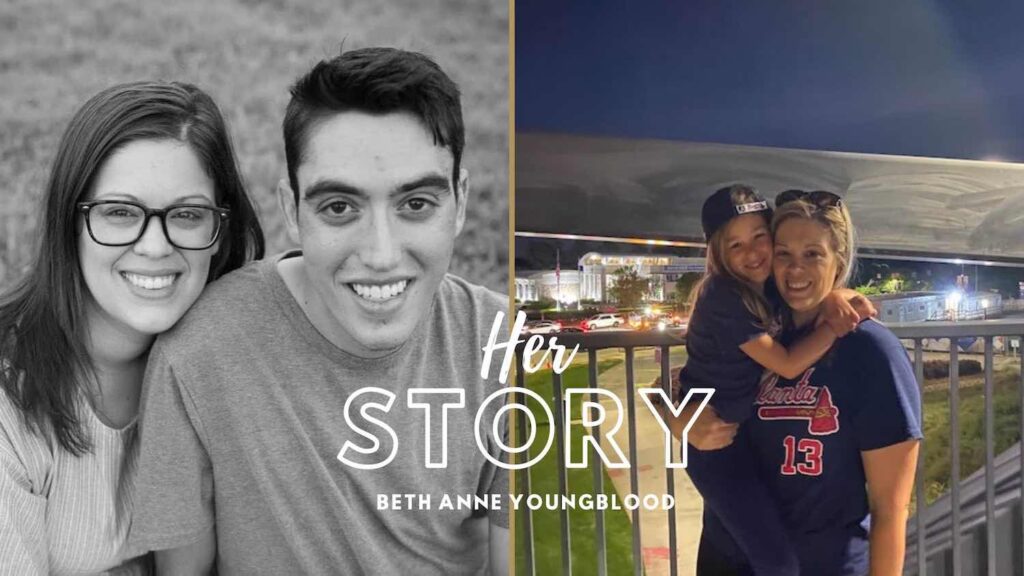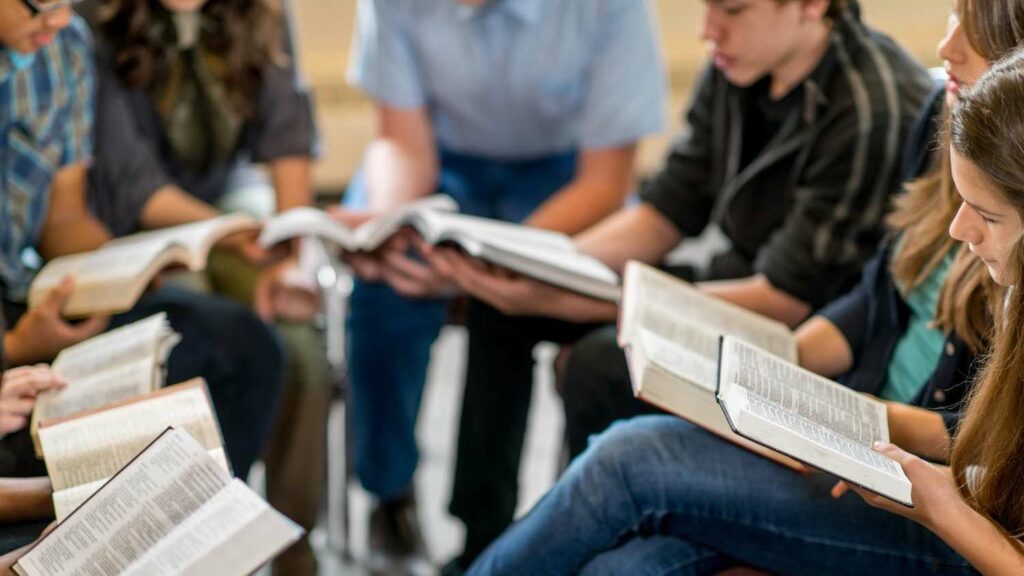When we stop to recall the Christmas story, many characters come to mind. Mary and Joseph, shepherds, angels, wise men, animals, and of course, baby Jesus. Other famous components join together to highlight the beauty and majesty of this great narrative: a star, manger, and the sign.
The sign – oh what an interesting treasure nestled into chapter two of Luke’s gospel:
“This will be a sign for you: you will find a baby wrapped in cloths and lying in a manger.” Luke 2:12
A sign for who? And what was the sign? These are good questions worth considering.
A sign by definition is “any object, action, event, pattern, etc., that conveys a meaning.”
Right after Jesus was born, the Bible tells us that Mary “wrapped Him in cloths, and laid Him in a manger, because there was no room for them in the inn.” Oh my, how sad, has been the response through the years when this story is told. Sweet baby Jesus had to be born in a manger because there was no room for them in the inn.
How could this be? Jesus, Emmanuel, God with us. Surely, Father God could have written this story differently. However, God has a way of writing stories with mystery. Beautiful mystery until the last jot and tittle have been woven into a tapestry creating a glorious and unexpected symphony. There are no accidents, mistakes or even unwritten chapters that God can’t use for a purpose. In fact, we are promised that God will work all things together for good for those who love Him. How reassuring. Even our biggest mess-ups can be sovereignly used as an exclamation point of wonder.
That’s exactly what happens right here in the Christmas story. The baby wrapped up in swaddling clothes lying in a manger isn’t there just because there was no room in the inn. There was no room in the inn so that God’s son, the Lamb of God, would be lying in a manger wrapped up in swaddling clothes . . . as a sign. A sign that conveys a meaning.
In order to understand the sign and its meaning, let’s look at the beginning (well, almost the beginning) of this stunning story. The story actually goes back all the way to before time began – before the foundation of the world. But let’s start with Adam and Eve in Genesis. Adam and Eve believed the lie of Satan resulting in the sin of disobedience putting their will above God’s. As soon as they ate the apple, they knew they had sinned and realized they were naked. Immediately, they sought covering for their sin. Remember, “The eyes of both of them were opened, and they knew that they were naked, and they sewed fig leaves together and made themselves loin coverings” (Genesis 3:7). Adam and Eve knew deep within that they were guilty of their sin and attempted to cover up.
Sin separates us from God, but it doesn’t hide us from God.
God knew their relationship had to be restored; therefore, He came to them to provide the only acceptable covering for their sin – one that involved blood! WOW . . . right from the very beginning, BLOOD was the required payment for sin! This was the first sacrifice. Before Chapter 3 of Genesis is over, God covers Adam and Eve, “And the LORD God made garments of skin for Adam and his wife, and clothed them” (Genesis 3:21).
Our sins today still require a blood sacrifice: “…all things are cleansed with blood, and without shedding of blood there is no forgiveness” (Hebrews 9:22).
Have you ever wondered what the blood is all about? We sing lots of songs in church that talk about the blood: There is Power in the Blood, Are you Washed in the Blood? The Blood will Never Lose its Power, and Nothing but the Blood.Blood is an important requirement when a covenant is made, in fact, the actual Hebrew meaning for the word covenant is “to cut and shed blood.” It is an unbreakable bond involving the total commitment of two parties. A covenant is forever. “When a covenant was made the two parties exchanged their coats representing their possessions, their belts representing their strength, and their swords representing their enemies. What’s mine is yours and what’s yours is now mine.”
Throughout Scripture the scarlet thread of the blood is woven with true stories of fallen man becoming a friend of God. The process of God’s covenant is God’s provision for a relationship with Him.
The Old Testament sacrificial system and the High Priest provided a picture that pointed forward to Jesus. The Bible tells us; however, that the blood of bulls and goats could not actually take away sins (Hebrews 10:4). Only through the blood of Jesus can we actually have remission of and redemption from our sins. In Leviticus, God teaches that the life of a living being is found in its blood. Blood represents life. When a life was taken and its blood shed as a sacrifice, it represented new life for another. The blood made atonement for their soul. Because of what blood represented, God would not allow anyone to eat the blood of an animal, and anyone who ate it was to be cut off from among the people.
What is a sacrifice? The dictionary defines sacrifice as, “The offering of animal, plant, or human life or of some material possession to a deity, as in propitiation or homage.”
Have you ever thought about a sacrifice? Many of us have not grown up experiencing the practice of offering a sacrifice. We don’t need to physically sacrifice anymore, but why? Sacrifice is depicted throughout the Bible. A sacrifice had to be offered as payment for our sins. God created us all with a need for worship which comes through sacrifice. Worship is what takes place when we repent of our sin and thank God for what He has done for us.
Remember Passover? God required participation in Passover and repetition of this feast year after year. A spotless lamb was kept in the home for three days. After this time, they were to slit the neck of the precious lamb they had grown to love, pour the blood in a basin, and place it over the door. The people were spared their lives only if the blood of the lamb was over their doors as stated in Exodus 12:13, “The blood shall be a sign for you on the houses where you live; and when I see the blood I will pass over you, and no plague will befall you to destroy you when I strike the land of Egypt.”The experience of Passover was a visual aid teaching that blood was payment for sin. Without blood, there would be death. The blood of Jesus Christ would replace the blood of animals. Jesus became our sacrificial lamb!
Many lambs had to be raised for this sacrifice each year. Most likely King David. as a shepherd boy. would have tended sheep destined to be sacrificed for the daily offerings. Each day two lambs were required for sacrifice in the Temple, bringing the yearly total to 730 lambs needed each year in addition to the thousands of lambs needed for Passover as well as for the other religious ceremonies.
Everyone in Israel knew that Bethlehem was known for their sacrificial lambs.
The place where these special lambs were raised was in a place called “The tower of the flock.” The actual name for this tower was Migdal Eder on the outskirts of Bethlehem. Sacrificial lambs were raised in this area around Jerusalem. In ancient days, Migdal Eder was a military tower created to stand on the edge of Bethlehem defending the city. This watchtower was used by the shepherds for protection from their enemies and wild animals. In this sheltering building the priests would bring in the ewes, which were about to give birth to their lambs, for protection. These special lambs came from a unique flock that was designed for sacrifice at the temple in Jerusalem. This watchtower was not for ordinary lambs but for lambs prepared for temple sacrifices.
Micah 4:8 prophesied about this special place where the Savior would be born: “As for you, O tower (Migdal) of the flock, the stronghold of the daughter of Zion, to you shall it come, even the former dominion shall come, the kingdom of the daughter of Jerusalem.”
It would be the Migdal Eder where the arrival of the Messiah would be declared first (the tower of the flock – the place where sacrificial lambs are raised)
The shepherds “keeping watch over their flock” were the shepherds of Migdal Eder. They were not ordinary shepherds but served the sacrificial system that foreshadowed the new covenant. They risked their lives to protect the sheep. The shepherds examined each lamb, choosing only the perfect firstborn males to bring to Jerusalem. There the lambs were purchased by those who desired to make atonement for their sins. On the same mountain where Abraham had offered his son to the Lord, the lambs would shed their blood and lose their lives as that atonement.
The shepherds were trained in the requirements for an animal that would be sacrificed. It was their job to make sure that none of the animals were hurt, damaged or blemished. During lambing season the sheep were brought to the tower from the fields, as the lower level functioned as the birthing room for sacrificial lambs. Being themselves under special rabbinical care, these priests would strictly maintain a ceremonially clean birthing place.
The manger, in the tower of the flock, was actually the stall where animals were kept not a smelly stable with other animals as we envision. After the lambs were born, the priestly shepherds would place the lambs in the hewn depression of a limestone rock known as the manger and wrap the newborn lambs in swaddling clothes preventing them from thrashing about and harming themselves until they had calmed down so they could be inspected to meet the requirement of being without spot or blemish.
Let’s highlight the pieces of this story:
- Man sinned
- God covered Adam and Eve with animal skins representing the shedding of blood
- Sin is only washed away by blood
- Sacrifice was practiced in the temple and pictured on Passover when the blood of spotless lambs over the door protected the people from death
- The tower of the flock, Migdal Eder, housed the manger where the sacrificial lambs were raised
- Swaddling cloths were used to prevent the lambs from hurting themselves or causing imperfection.
- Shepherds had a very important job at Migdal Eder to swaddle every lamb that was born preparing it for temple sacrifice.
Let’s now combine the information above with the Christmas story in Luke 2 allowing the Holy Spirit to illuminate the beauty of the sign:
“Now in those days a decree went out from Caesar Augustus that a census be taken of all the inhabited earth. This was the first census taken while Quirinius was governor of Syria. And everyone was on his way to register for the census, each to his own city. Joseph also went up from Galilee, from the city of Nazareth, to Judea, to the city of David which is called Bethlehem, because he was of the house and family of David, in order to register along with Mary, who was engaged to him, and was with child…
While they were there, the days were completed for her to give birth. And she gave birth to her firstborn son; and she wrapped Him in cloths, and laid Him in a manger, because there was no room for them in the inn…
In the same region, there were some shepherds staying out in the fields and keeping watch over their flock by night. And an angel of the Lord suddenly stood before them, and the glory of the Lord shone around them; and they were terribly frightened. But the angel said to them, “Do not be afraid; for behold, I bring you good news of great joy which will be for all the people; for today in the city of David there has been born for you a Savior, who is Christ the Lord.”
“This will be a sign for you: you will find a baby wrapped in cloths and lying in a manger.”
What was the sign? The baby wrapped in cloths. Where was the baby lying? In a manger. Do you think the shepherds understood the “sign?” Absolutely!
There was no need for the angels to give the shepherds directions to the birth place of the “Savior who is Christ the Lord.” For the sign of the manger could only mean their manger at the tower of the flock where they routinely raised and swaddled the sacrificial lambs. The shepherds knew exactly where this baby was, and now they knew Who the baby was! These shepherds experienced the reality of the Lamb to which their ministry had been pointing to for years.
Jesus was the sacrificial lamb, and He was our sacrificial lamb.
The place and manner of His birth clearly point to this.
He came to save the people from their sins; He came to bring reconciliation and forgiveness.
He did this by shedding his blood and dying on the cross.
The other sacrificial lambs could only cover sin,
but Jesus as the sacrificial lamb dealt with sin once and for all,
and the temple shepherds were the first to recognize this.
Jesus was not stuck in an animal stable as the last resort, but in a manger (stall) at the tower of the flock (for sacrificial lambs) to fulfill prophecy. Jesus was born in Bethlehem, at the birthing place for the sacrificial lambs that were offered in the Temple in Jerusalem which Micah 4:8 calls the tower of the flock. Jesus was born in the very birthplace where tens of thousands of lambs, which had been sacrificed to prefigure Him.
God promised it, God pictured it, and God performed it at Migdal Eder.
“And she gave birth to her firstborn son; and she wrapped Him in cloths, and laid Him in a manger, because there was no room for them in the inn.” Luke 2:7
1 Peter 1:18-19 states, “knowing that you were not redeemed with perishable things like silver or gold from your futile way of life inherited from your forefathers, but with precious blood, as of a lamb unblemished and spotless, the blood of Christ.”
Sources:






